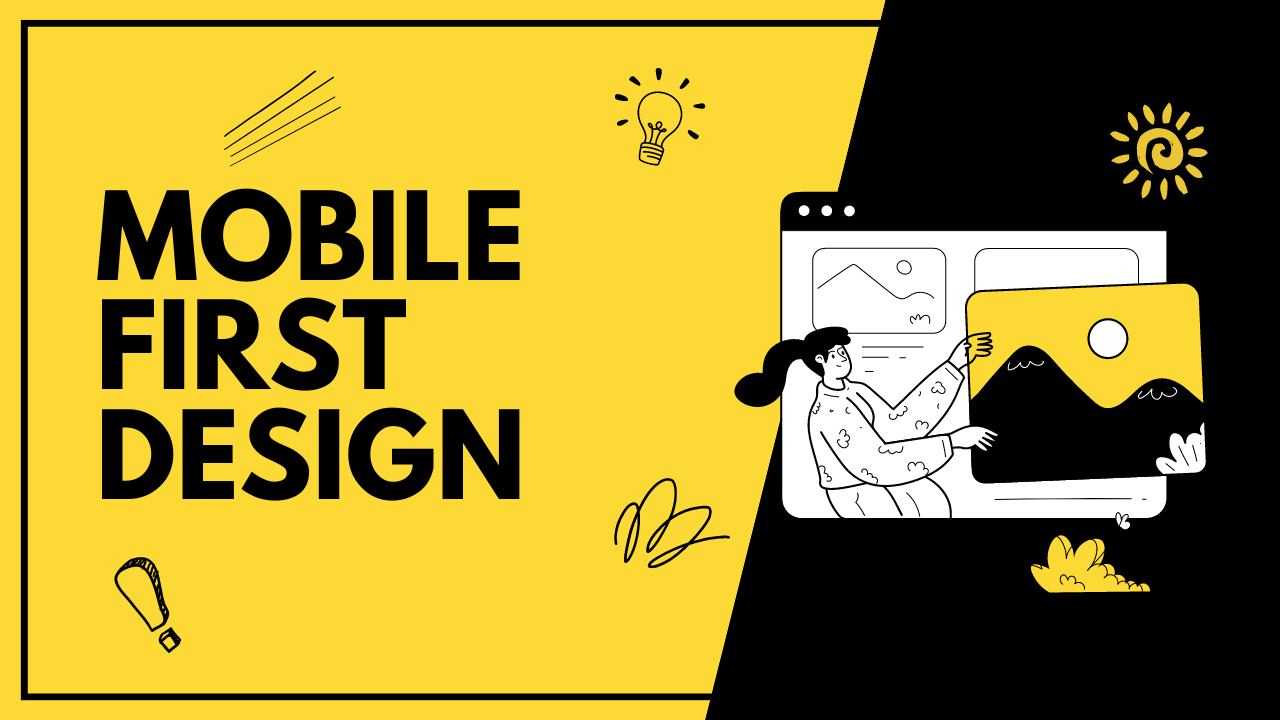Mobile-first design is a design approach that prioritizes mobile devices over desktop devices. With the increasing use of mobile devices, websites must be designed mobile-first. In this article, we will discuss the importance of mobile-first design, best practices for mobile-first design, and how to optimize your website for mobile-first indexing.
Why Mobile-First Design is Important
Mobile-first design is important because it ensures your website design is optimized for mobile devices. With the increasing use of mobile devices, websites must be designed mobile-first. Google says more than half of web traffic comes from mobile devices. This means that if your website is not optimized for mobile devices, you are missing out on a significant amount of traffic.
Best Practices for Mobile-First Design
Here are some best practices for mobile-first design:
1. Use a Responsive Design
Responsive design is a design approach that ensures your website looks great on all devices, including desktops, tablets, and mobile devices. With responsive design, your website will automatically adjust to the screen size of the device it is being viewed on. This ensures that your website looks good on all devices and provides an excellent user experience.
2. Optimize Your Images
Images are essential to any website. However, they can also slow down your website if they are not optimized. To ensure your website loads quickly on mobile devices, optimize your images. This means compressing your images and reducing file size without compromising quality.
3. Use a mobile-friendly font
Fonts that look great on desktop devices may not appear right on mobile devices. To ensure that your website looks aesthetically pleasing on mobile devices, you should use a mobile-friendly font. Mobile-friendly fonts are easy to read on small screens.
4. Use a simple layout.
Mobile-first design requires a simple layout. A simple layout ensures mobile navigation. It also ensures that your website loads quickly on mobile devices.
5. Use mobile-friendly navigation
Navigation is an essential part of any website. However, navigation that works well on desktop devices may not work well on mobile devices. To ensure that your website is easy to navigate on mobile devices, you should use mobile-friendly navigation. This means using a navigation menu that is easy to navigate on small screens.
How to Optimize Your Website for Mobile-First Indexing
Mobile-first indexing is Google’s preferred method of crawling, indexing, and ranking websites. That really helps you for your SEO Efforts. With mobile-first indexing, Google crawls and indexes your mobile website first. This means that if your website is not optimized for handheld devices, you may not rank well in Google’s search results.
Here are some tips to optimize your website for mobile-first indexing:
1. Use a Responsive Design
As mentioned earlier, responsive design is essential for mobile-first design. It is also essential for mobile-first indexing. With a responsive design, your website will automatically adjust to the screen size of the device it is being viewed on. This ensures that your website looks good on all devices, including mobile devices.
2. Optimize Your Images
Optimizing your images is also essential for mobile-first indexing. To ensure your website loads quickly on mobile devices, optimize your images. This means compressing your images and reducing file size without compromising quality.
3. Use a mobile-friendly font
Mobile-friendly fonts are also essential for mobile-first indexing. Mobile-friendly fonts are easy to read on small screens. Using a mobile-friendly font ensures your website looks good on mobile devices.
4. Use a simple layout.
Using a simple layout is also essential for mobile-first indexing. A simple layout ensures mobile navigation. It also ensures that your website loads quickly on mobile devices.
5. Use mobile-friendly navigation
Mobile-friendly navigation is also essential for mobile-first indexing. This means using a navigation menu that is easy to navigate on small screens. Mobile-friendly navigation ensures your website is easy to navigate on mobile devices.
Conclusion
Mobile-first design is essential for optimizing your website for mobile devices. With the increasing use of mobile devices, websites must be designed mobile-first. By following the best practices for mobile-first design and optimizing your website for mobile-first indexing, you can ensure that your website looks good on all devices and provides an excellent user experience.









